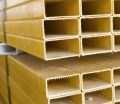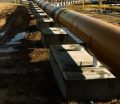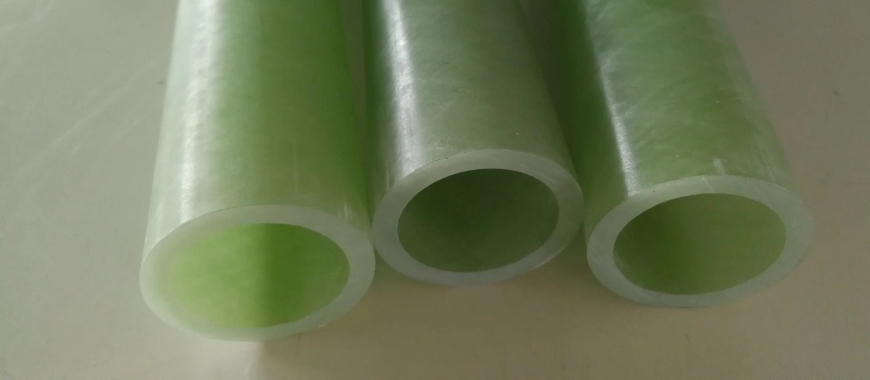
Thin wall fiberglass tubing is a specialized composite material known for its exceptional strength-to-weight ratio and versatility across various industrial and commercial applications. This technology involves the use of high-quality fiberglass and resins to create fiberglass tubes with thin walls that are both lightweight and durable. Thin wall fiberglass tubing is widely used in sectors such as telecommunications, construction, and marine industries due to its corrosion resistance, thermal insulation, and ability to withstand harsh environmental conditions while maintaining structural integrity. GangLong Fiberglass offers customizable thin wall fiberglass tubing made from glass fiber roving and epoxy resin, ideal for strength, weight balance, and radio transparency.
Simplifying Your Life: Key Functionalities
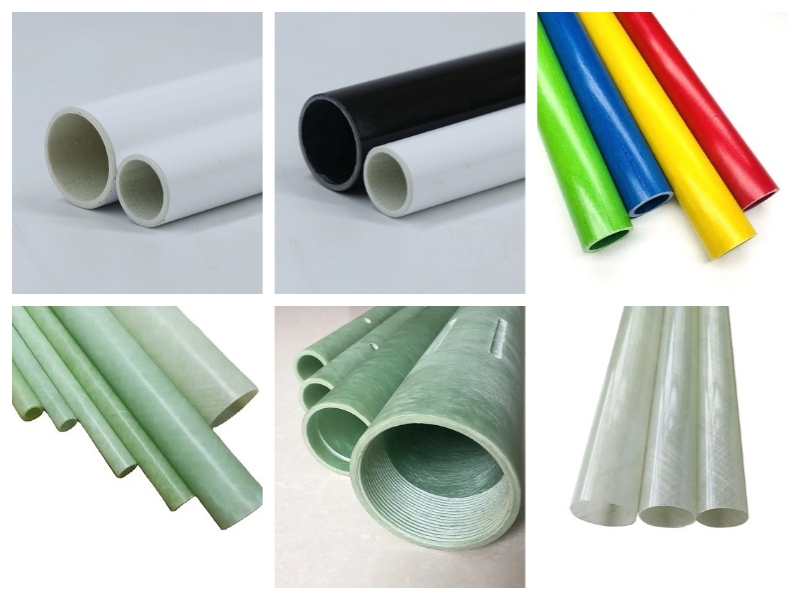
| Attributes | Details |
|---|---|
| Place of Origin | Hebei, China |
| Brand Name | GangLong Fiberglass |
| Product Name | Thin Wall Fiberglass Tubing |
| Material | Fiberglass |
| Application | Multipurpose |
| Technology | Rolling, Pultrusion, Molding |
| Features | High Strength, Stress Corrosion Resistance, Lightweight, Insect Repellent |
| Surface Treatment | Smooth |
| Color | Customized Color |
| Size | Customized Size |
| Length | Customized Length |
| Thickness | Customized Thickness |
| Shape | Square, Round, Customized Shape |
| Processing Services | Bending, Uncoiling, Forming, Welding, Punching, Cutting, Painting |
| Certification | ISO |
| Weave | 3K, Twill, Plain |
What is Thin Wall Fiberglass Tubing?
Thin wall fiberglass tubing is a lightweight, high-strength material commonly used in industries where durability, flexibility, and performance are required, but weight is a crucial factor. This type of tubing is made from high-quality glass fiber roving and epoxy resin, which are combined using a pultrusion process to create a robust, yet lightweight tube. The “thin wall” designation refers to the relatively small thickness of the tubing, typically around 0.03 inches, making it ideal for applications that require structural strength without adding unnecessary weight.
One of the key benefits of thin wall fiberglass tubing is its versatility. It can be tailored for a variety of uses, including lightweight frame construction, tubular vessels, poles, column supports, and other structural elements. Its ability to balance strength and weight makes it an excellent choice for applications like aerospace, automotive, telecommunications, and outdoor structures. Unlike carbon fiber, fiberglass is non-conductive and offers superior RF (radio frequency) transparency, making it a preferred choice in environments where electromagnetic interference needs to be minimized.
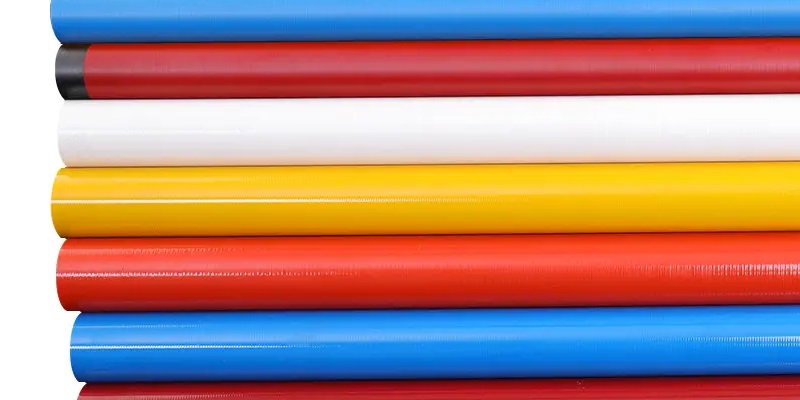
Additionally, thin wall fiberglass tubing is resistant to corrosion, UV degradation, and chemical exposure, enhancing its longevity in harsh environments. It’s often used for applications where other materials like metals or carbon fibers may not perform as well, or where cost and weight constraints are more critical. With customizable sizes and styles, thin wall fiberglass tubing can be adapted to meet specific project requirements, providing an efficient, durable solution for various industrial and engineering needs.
Innovations and Future Trends in Thin Wall Fiberglass Tubing
Emerging Technologies in Fiberglass Manufacturing
The production of thin wall fiberglass tubing has seen significant advancements with the integration of new manufacturing technologies. Innovations such as automated filament winding and advanced resin formulations have enhanced the structural integrity and performance of these tubes. These technologies enable precise control over the tube’s thickness and fiber alignment, resulting in a product that offers superior strength and durability. Additionally, the use of environmentally friendly resins and energy-efficient processes is gaining traction, reducing the environmental impact of manufacturing thin wall fiberglass tubing.
Future Applications and Market Growth
As industries continue to demand lightweight, strong, and corrosion-resistant materials, the applications for thin wall fiberglass tubing are expected to expand. The growing emphasis on sustainability and energy efficiency in construction and transportation is driving the adoption of fiberglass tubing in new markets. For instance, in the renewable energy sector, these tubes are being used in wind turbine blades and solar panel supports due to their strength and lightweight properties. The telecommunications industry is also likely to see increased use of thin wall fiberglass tubing for cable protection and management, particularly in harsh environments.
The market for thin wall fiberglass tubing is projected to grow significantly, driven by the increasing need for durable, cost-effective materials in infrastructure development, industrial machinery, and consumer goods. As manufacturers continue to innovate and improve the properties of fiberglass tubing, it is expected that these tubes will become even more integral to the construction, energy, and transportation sectors.
At GangLong Fiberglass, we are committed to staying at the forefront of these developments, offering our customers the latest in fiberglass technology, including custom fiberglass columns. Our dedication to innovation ensures that we provide high-quality solutions tailored to meet the specific needs of our clients across various industries. Our thin wall fiberglass tubing is designed to meet the evolving needs of various industries, providing a reliable, long-lasting solution for a wide range of applications. As the market continues to grow, we remain dedicated to delivering high-quality products that set the standard for performance and sustainability.
Applications of Thin Wall Fiberglass Tubing
Thin wall fiberglass tubing has become a crucial component in various industries due to its unique combination of strength, durability, and lightweight properties. The tubing’s versatility and ability to withstand harsh environmental conditions make it ideal for a wide range of applications. In this section, we will explore how thin wall fiberglass tubing is utilized across different sectors, including telecommunications, construction, marine industries, and electrical insulation.
Use in Telecommunications and Cable Management
One of the primary applications of thin wall fiberglass tubing is in the telecommunications industry, where it is used extensively for cable management and protection. The non-conductive nature of fiberglass makes it an excellent choice for housing electrical and communication cables, particularly in environments where electromagnetic interference (EMI) must be minimized. Thin wall fiberglass tubing provides a protective barrier that shields cables from physical damage, moisture, and other environmental factors that could compromise signal integrity.
In underground and aerial installations, thin wall fiberglass tubing is employed to encase and protect cables, ensuring their longevity and reliability. In underground applications, the tubing prevents damage from soil movement, water ingress, and exposure to chemicals. In aerial deployments, the lightweight nature of fiberglass reduces the load on poles and towers, enhancing the overall stability of the installation. Additionally, the smooth inner surface of the tubing facilitates easy cable pulling during installation, reducing the risk of damage to the cables and ensuring a smooth, uninterrupted installation process.
The use of thin wall fiberglass tubing in telecommunications is not only about protecting cables but also about improving the efficiency and safety of the entire network. The tubing’s durability and resistance to environmental factors make it a reliable solution for long-term cable management, contributing to the overall stability and performance of telecommunications infrastructure.
Applications in Construction and Structural Supports
In the construction industry, thin wall fiberglass tubing is widely used for structural supports and other architectural elements. The material’s high strength-to-weight ratio makes it an ideal choice for applications where both strength and lightweight properties are essential. This is particularly important in modern construction, where reducing the weight of materials can lead to increased efficiency, cost savings, and ease of installation.
Thin wall fiberglass tubing is used in a variety of structural applications, including the construction of frameworks, railings, guardrails, and support beams. Its resistance to corrosion and environmental degradation ensures that these structures maintain their integrity and appearance over time, even in harsh conditions such as coastal environments or areas with high humidity. This durability reduces the need for maintenance and replacement, making thin wall fiberglass tubing a cost-effective solution for long-term construction projects.
Another advantage of using thin wall fiberglass tubing in construction is its flexibility in design. The tubing can be manufactured in various shapes and sizes, allowing architects and engineers to create innovative and complex designs without compromising on strength or performance. This versatility makes thin wall fiberglass tubing an ideal material for both traditional and contemporary construction projects, offering a combination of functionality and aesthetic appeal.
Role in Marine and Offshore Industries
The marine and offshore industries present some of the most challenging environments for materials, with constant exposure to saltwater, high humidity, and corrosive chemicals. Thin wall fiberglass tubing is particularly well-suited to these conditions due to its exceptional resistance to corrosion and its ability to withstand the harsh marine environment.
In marine applications, thin wall fiberglass tubing is used for a variety of purposes, including the construction of masts, antenna supports, and structural components on boats and ships. The tubing’s lightweight properties contribute to the overall stability and performance of marine vessels, reducing the weight load above the waterline and enhancing buoyancy and balance. Additionally, the corrosion resistance of fiberglass means that these components require less maintenance and have a longer service life compared to metal alternatives, which can corrode and degrade over time.
Offshore oil and gas platforms also benefit from the use of thin wall fiberglass tubing. In these environments, where safety and durability are paramount, fiberglass provides a reliable alternative to steel for various structural and functional components. The non-conductive nature of fiberglass reduces the risk of electrical hazards, while its resistance to environmental factors ensures the longevity and safety of offshore installations.
The use of thin wall fiberglass tubing in marine and offshore industries is not only about durability but also about improving the overall efficiency and safety of operations. By providing a lightweight, strong, and corrosion-resistant material, epoxy fiberglass tube plays a crucial role in enhancing the performance and reliability of marine and offshore infrastructure. Its unique properties make it an ideal choice for applications that require durability in harsh environments.
Use in Electrical Insulation and Heat Management
Another significant application of thin wall fiberglass tubing is in the field of electrical insulation and heat management. Fiberglass is an excellent insulator, both electrically and thermally, making it a preferred material for use in electrical systems and components that require protection from heat and electrical currents.
In electrical applications, thin wall fiberglass tubing is used to insulate wires, cables, and other components, preventing electrical leakage and protecting against short circuits. The non-conductive properties of fiberglass ensure that the tubing can be used safely in high-voltage environments, where even minor conductivity could lead to significant safety hazards. Additionally, the tubing’s resistance to heat makes it ideal for use in environments where components are exposed to high temperatures, such as in power generation facilities, industrial machinery, and automotive applications.
Thin wall fiberglass tubing is also used in heat management systems, where it serves as a barrier to protect sensitive components from heat exposure. The tubing’s ability to withstand high temperatures without degrading ensures that it can provide long-term protection in applications where heat is a significant concern. This makes thin wall fiberglass tubing an essential material in industries that require reliable thermal insulation, contributing to the overall safety and efficiency of electrical and mechanical systems.
Thin Wall Fiberglass Tubing Is Used in Industrial
Thin wall fiberglass tubing is used in industrial applications, such as chemical processing, where the tubing must resist aggressive chemicals and maintain its strength under pressure. The ability to customize the tubing’s material properties ensures that it can withstand the specific challenges of each application, providing a long-lasting and reliable solution.
Key Benefits of Using Large Diameter Fiberglass Pipe
Advantages of Thin Wall Fiberglass Tubing
Thin wall fiberglass tubing has gained significant popularity across various industries due to its unique combination of strength, lightweight properties, and versatility. Whether used in telecommunications, construction, or marine applications, thin wall fiberglass tubing offers numerous benefits that make it a superior choice over traditional materials like steel or aluminum. In contrast, thick wall fiberglass tube is also available for applications requiring enhanced strength and durability. This section will explore the key advantages of thin wall fiberglass tubing, focusing on its cost-effectiveness in long-term use, customization options for specific needs, and its environmental benefits and sustainability.
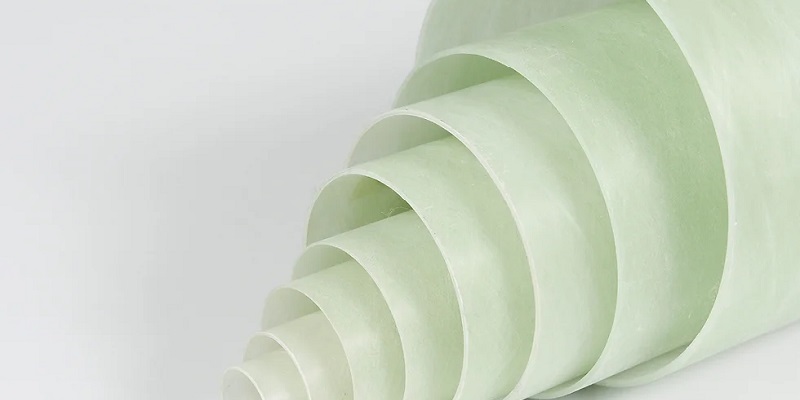
Cost-Effectiveness in Long-Term Use
One of the most compelling reasons to choose thin wall fiberglass tubing is its cost-effectiveness over the long term. While the initial cost of fiberglass tubing may be higher than that of traditional materials like steel or PVC, the long-term savings are substantial. This cost-effectiveness is primarily due to the material’s durability, resistance to corrosion, and minimal maintenance requirements.
Thin wall fiberglass tubing is inherently resistant to corrosion, which is a common issue with metal pipes, especially in environments exposed to moisture, chemicals, or saltwater. This resistance significantly extends the lifespan of fiberglass tubing, reducing the need for frequent replacements and repairs. For example, in marine applications where exposure to saltwater is constant, thin wall fiberglass tubing proves to be an ideal choice, as it can withstand harsh conditions without deteriorating.
Moreover, fiberglass tubing does not suffer from the same issues of rust or decay that plague metal alternatives. This longevity means that once installed, thin wall fiberglass tubing requires little to no maintenance, leading to lower operational costs over time. Industries that rely on continuous operation, such as power plants or manufacturing facilities, can particularly benefit from this reduced downtime and maintenance, translating into significant cost savings.
In addition to its resistance to environmental factors, thin wall fiberglass tubing also boasts a high strength-to-weight ratio. This means that despite being lightweight, the tubing can handle substantial loads and stresses without compromising its structural integrity. The lightweight nature of the tubing also reduces transportation and installation costs, as it is easier to handle and requires less labor and equipment. This combination of durability, low maintenance, and ease of installation makes thin wall fiberglass tubing a cost-effective solution for a wide range of applications.
Customization Options for Specific Needs
Another significant advantage of thin wall fiberglass tubing is its ability to be customized to meet specific application requirements. Whether you need tubing with particular dimensions, wall thicknesses, or performance characteristics, fiberglass tubing can be tailored to suit the exact needs of your project.
Customization begins with the manufacturing process, where different resin formulations and fiberglass weaves can be used to achieve specific properties. For example, if a project requires tubing that can withstand high temperatures, a heat-resistant resin can be incorporated into the manufacturing process. Alternatively, if chemical resistance is a priority, the resin can be selected to offer superior resistance to acids, alkalis, or solvents. This flexibility in material selection ensures that the thin wall fiberglass tubing will perform optimally in its intended environment.
The ability to customize extends to the physical dimensions of the tubing as well. Tubing can be manufactured in various diameters, lengths, and wall thicknesses to meet the precise specifications of a project. This is particularly useful in applications where space is limited or where the tubing must fit within existing infrastructure. For example, GangLong Fiberglass offers a wide range of customization options, allowing customers to select the exact dimensions and features needed for their specific applications.
In addition to standard customization options, thin wall fiberglass tubing can also be designed with specialized features such as UV inhibitors for outdoor applications, fire retardants for use in high-risk environments, or conductive properties for applications requiring electrical grounding. These additional features further enhance the versatility of fiberglass tubing, making it suitable for a broader range of industries and applications.
The ease with which thin wall fiberglass tubing can be customized also simplifies the design and engineering process. Engineers and designers can work with manufacturers to develop tubing that meets the exact requirements of their projects, reducing the need for additional modifications or adjustments during installation. This not only saves time and money but also ensures that the finished product performs as expected, without compromising safety or efficiency.
Environmental Benefits and Sustainability
In today’s world, where sustainability and environmental impact are increasingly important considerations, thin wall fiberglass tubing stands out as an environmentally friendly option. Its long lifespan, minimal maintenance requirements, and energy-efficient manufacturing process all contribute to its sustainability credentials.
One of the primary environmental benefits of thin wall fiberglass tubing is its long service life. Because fiberglass is resistant to corrosion, chemicals, and environmental degradation, the tubing does not need to be replaced as frequently as materials like steel or PVC. This extended lifespan reduces the demand for raw materials and energy required to produce replacement tubing, thereby lowering the overall environmental impact of a project. Additionally, the reduced need for maintenance and repairs means fewer resources are consumed over the life of the tubing, further enhancing its sustainability.
The manufacturing process for thin wall fiberglass tubing is also more environmentally friendly compared to traditional materials. The production of fiberglass requires less energy than the production of metals like steel or aluminum. Furthermore, the raw materials used in fiberglass production, such as silica, are abundant and have a lower environmental impact than metals, which often require intensive mining and refining processes. By choosing thin wall fiberglass tubing, industries can reduce their carbon footprint and contribute to a more sustainable future.
Another environmental benefit of thin wall fiberglass tubing is its potential for recycling. While fiberglass is not as easily recyclable as some metals, it can still be repurposed or recycled into new products, such as construction materials or reinforcement fibers. This ability to recycle or repurpose the material helps minimize waste and reduces the environmental impact associated with the disposal of used tubing.
In addition to its recyclability, thin wall fiberglass tubing also contributes to environmental sustainability by reducing the need for chemical treatments and coatings. Traditional metal pipes often require protective coatings to prevent corrosion, which can involve the use of environmentally harmful chemicals. In contrast, fiberglass tubing is naturally resistant to corrosion and does not require these additional treatments, reducing the potential for environmental contamination.
Furthermore, the lightweight nature of thin wall fiberglass tubing reduces transportation-related emissions. Transporting heavy materials like steel or concrete pipes requires more fuel, resulting in higher carbon emissions. In contrast, the lightweight fiberglass tubing can be transported more efficiently, reducing the environmental impact associated with shipping and logistics. This benefit is particularly significant in large-scale projects where large quantities of piping material need to be transported over long distances.
Finally, the use of thin wall fiberglass tubing in applications such as water treatment and distribution can contribute to environmental conservation efforts. The smooth internal surface of the tubing reduces friction and energy consumption during fluid transport, making the overall system more energy-efficient. This increased efficiency can lead to lower energy usage and reduced greenhouse gas emissions, supporting broader sustainability goals.
Durability in Harsh Environments
One of the key reasons industries choose thin wall fiberglass tubing is its exceptional durability in harsh environments. Whether exposed to extreme temperatures, corrosive chemicals, or high-pressure conditions, fiberglass tubing consistently outperforms many traditional materials.
In high-temperature environments, thin wall fiberglass tubing maintains its structural integrity, making it an excellent choice for applications such as exhaust systems, high-temperature fluid transport, or industrial heating systems. The ability to withstand extreme temperatures without deforming or losing strength is a critical factor in ensuring the safety and reliability of the systems in which the tubing is used.
Additionally, fiberglass tubing’s resistance to chemical corrosion makes it ideal for use in chemical processing plants, wastewater treatment facilities, and other environments where exposure to aggressive chemicals is a concern. Unlike metal pipes, which can corrode and weaken over time when exposed to harsh chemicals, fiberglass tubing remains unaffected, providing a longer-lasting solution that requires less maintenance and replacement.
Versatility Across Industries
Thin wall fiberglass tubing is used in a wide range of industries, from telecommunications and electrical insulation to marine and offshore applications. Its versatility stems from its combination of lightweight properties, strength, and corrosion resistance, which make it suitable for both structural and protective uses.
In the telecommunications industry, thin wall fiberglass tubing is often used to protect cables and other sensitive equipment from environmental factors. Its lightweight nature makes it easy to install in various settings, while its durability ensures long-term protection against moisture, UV radiation, and physical damage.
In the marine and offshore industries, thin wall fiberglass tubing is used in applications ranging from structural supports to fluid transport systems. The tubing’s resistance to saltwater corrosion makes it particularly valuable in these environments, where other materials might fail over time. Additionally, its lightweight properties make it easier to handle and install in challenging offshore conditions.
In construction, thin wall fiberglass tubing is used for a variety of purposes, including as support beams, conduits, and protective casings. Its strength-to-weight ratio allows it to provide the necessary support without adding excessive weight to structures, while its corrosion resistance ensures long-term durability even in harsh environmental conditions.
Energy Efficiency in Applications
Another significant advantage of thin wall fiberglass tubing is its contribution to energy efficiency in various applications. The smooth internal surface of the tubing reduces friction, which in turn lowers the energy required to pump fluids through the system. This reduction in energy consumption is particularly important in large-scale industrial processes, where even small improvements in efficiency can lead to significant cost savings and environmental benefits.
Moreover, the insulating properties of fiberglass make it an ideal material for applications requiring thermal insulation. In heating and cooling systems, thin wall fiberglass tubing can help maintain temperature control, reducing the need for additional energy to compensate for heat loss or gain. This thermal efficiency not only lowers operational costs but also supports sustainability by reducing the overall energy demand of the system.
Fiber Glass Duct Board: Enhancing Energy Efficiency in Buildings
Manufacturing Processes of Thin Wall Fiberglass Tubing
Thin wall fiberglass tubing is a versatile and durable material widely used in various industries, from construction and telecommunications to marine and industrial applications. The manufacturing processes that produce thin wall fiberglass tubing are essential to achieving the specific properties that make it such a valuable resource. This section will explore the two primary manufacturing processes for thin wall fiberglass tubing: filament winding for enhanced durability and the pultrusion method for consistent quality.
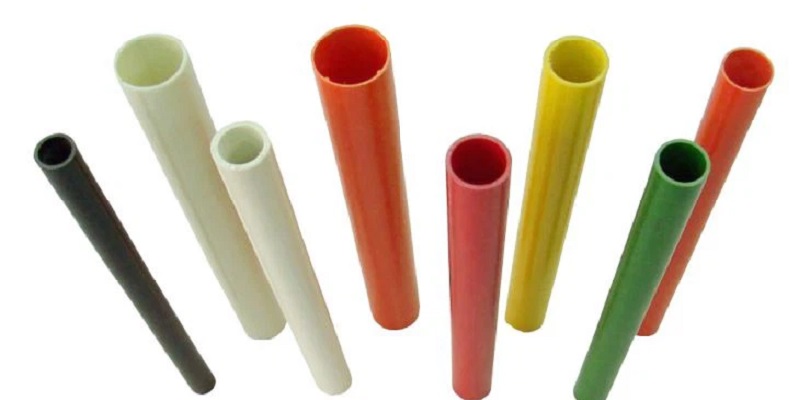
Filament Winding for Enhanced Durability
Filament winding is one of the most critical manufacturing techniques used to produce thin wall fiberglass tubing. This process involves winding continuous strands of fiberglass filaments, which are pre-impregnated with resin, around a rotating mandrel. The mandrel’s shape and size determine the internal diameter of the tubing, while the number of layers and winding pattern determine the thickness and mechanical properties of the finished product.
One of the primary advantages of filament winding is its ability to produce tubing with enhanced durability. The process allows for precise control over the orientation of the fiberglass filaments, which can be adjusted to optimize the tube’s strength in specific directions. For example, if the tubing is expected to endure significant axial loads, the filaments can be oriented to maximize tensile strength along the tube’s length. Conversely, if the tubing must resist external pressure, the filaments can be wound circumferentially to enhance the hoop strength.
Filament winding is particularly advantageous for producing thin wall fiberglass tubing used in high-stress environments, such as in aerospace or chemical processing applications. The ability to customize the winding pattern means that the tubing can be engineered to meet the exact requirements of the application, providing superior performance compared to more conventional manufacturing methods.
Another significant benefit of filament winding is the consistency it offers. Because the process is highly automated, it allows for the production of tubing with uniform thickness and material distribution. This uniformity is crucial in applications where the tubing must maintain consistent properties along its entire length, such as in fluid transport systems or structural supports.
The materials used in filament winding also contribute to the enhanced durability of thin wall fiberglass tubing. The resin matrix that binds the fiberglass filaments together can be selected based on the specific needs of the application. For example, in environments where chemical resistance is critical, a resin with superior resistance to acids, alkalis, or solvents can be used. Similarly, for applications that involve exposure to high temperatures, a heat-resistant resin can be chosen to ensure the tubing maintains its structural integrity under thermal stress.
At GangLong Fiberglass, customers can specify the exact resin and filament materials they need, allowing for the production of thin wall fiberglass tubing that is perfectly suited to its intended use. This level of customization ensures that the tubing will perform reliably in even the most demanding environments, offering a long service life with minimal maintenance requirements.
Pultrusion Method for Consistent Quality
The pultrusion method is another widely used process for manufacturing thin wall fiberglass tubing, particularly when consistent quality and high-volume production are required. Pultrusion is a continuous manufacturing process that involves pulling fiberglass strands through a resin bath, followed by a heated die that shapes the material into the desired tubular form. The die determines the external shape and dimensions of the tubing, while the internal diameter is controlled by the mandrel positioned inside the die.
One of the most significant advantages of the pultrusion method is its ability to produce thin wall fiberglass tubing with consistent quality and properties along its entire length. Because the process is continuous and highly controlled, it minimizes variations in the tubing’s dimensions and material composition. This consistency is particularly important in applications where precise tolerances are required, such as in electrical insulation or fluid transport systems.
The pultrusion method also allows for the production of complex cross-sectional shapes, making it possible to create tubing with integrated features such as flanges, ribs, or multi-chamber designs. This capability is particularly valuable in specialized applications where standard round tubing may not be suitable. For example, in the construction industry, thin wall fiberglass tubing produced via pultrusion can be used as lightweight structural elements that are easy to install and resistant to environmental degradation.
Another key benefit of the pultrusion method is its efficiency. Because the process is continuous, it can produce large quantities of tubing quickly and with minimal waste. This efficiency makes pultrusion an ideal choice for high-volume production, where consistent quality and cost-effectiveness are paramount. The ability to produce long lengths of tubing without joints or seams also contributes to the overall strength and reliability of the finished product.
The materials used in the pultrusion process are similar to those used in filament winding, with the choice of resin and fiberglass tailored to the specific needs of the application. However, because the pultrusion method is typically used for producing standardized tubing profiles, it is particularly well-suited to applications where large quantities of identical tubing are required.
At GangLong Fiberglass, the pultrusion method is used to produce a wide range of thin wall fiberglass tubing products, each designed to meet the stringent requirements of modern industrial and commercial applications. Whether used in telecommunications, marine, or construction applications, the tubing produced via pultrusion offers the consistent quality and performance that engineers and designers demand.
Advantages of Filament Winding and Pultrusion
While both filament winding and pultrusion offer unique advantages, the choice between these two methods often depends on the specific requirements of the application. Filament winding is typically preferred for applications where customized strength and durability are critical, while pultrusion is ideal for high-volume production and applications that require consistent quality.
Filament winding’s ability to tailor the orientation and distribution of fiberglass filaments makes it the go-to choice for producing thin wall fiberglass tubing that must withstand specific mechanical stresses. For example, in aerospace applications where weight and strength are critical, filament-wound tubing can be engineered to provide maximum tensile strength while minimizing weight. Similarly, in chemical processing environments, the ability to customize the resin matrix ensures that the tubing can resist the harshest chemicals without degrading over time.
On the other hand, the pultrusion method’s efficiency and consistency make it the preferred choice for producing large quantities of standardized tubing. For example, in telecommunications, where large runs of cable protection tubing are required, pultrusion provides a cost-effective solution that ensures each piece of tubing meets the same high standards. The ability to produce complex profiles also makes pultrusion an excellent choice for specialized applications where non-standard shapes are needed.
Customization and Material Selection
One of the key benefits of both filament winding and pultrusion is the ability to customize thin wall fiberglass tubing to meet the specific needs of a given application. Customization can involve selecting the appropriate resin and fiberglass materials, as well as determining the optimal dimensions and structural properties of the tubing.
For example, GangLong Fiberglass offers a wide range of customization options, allowing customers to choose from various resin formulations, including those that provide enhanced chemical resistance, UV protection, or flame retardancy. The choice of fiberglass filaments can also be tailored to provide the desired balance of strength, flexibility, and weight. By working closely with manufacturers, customers can ensure that the finished product meets the exact specifications required for their project.
In addition to material selection, the customization process can also involve designing the tubing’s cross-sectional shape and profile. Whether the application requires round, square, or more complex shapes, both filament winding and pultrusion can be adapted to produce the desired profile. This flexibility is particularly valuable in applications where the tubing must interface with other components or fit within confined spaces.
Environmental and Sustainability Benefits
The environmental benefits of thin wall fiberglass tubing are significant, particularly when compared to traditional materials like steel or aluminum. The production of fiberglass tubing requires less energy and generates fewer emissions than the production of metals, making it a more sustainable choice. Additionally, the long lifespan and low maintenance requirements of fiberglass tubing contribute to its overall sustainability, as the need for frequent replacements and repairs is minimized.
Furthermore, the lightweight nature of fiberglass tubing reduces transportation-related emissions, as less fuel is required to transport the material to its final destination. This benefit is particularly important in large-scale projects where large quantities of tubing must be shipped over long distances.
The recyclability of fiberglass tubing also contributes to its environmental benefits. While fiberglass is not as easily recyclable as some metals, it can still be repurposed or recycled into new products, reducing the environmental impact associated with disposal.
AtGangLong Fiberglass, sustainability is a key consideration in the production of thin wall fiberglass tubing, with efforts made to minimize waste and reduce the environmental impact of the manufacturing process. By choosing fiberglass tubing, industries can contribute to a more sustainable future while benefiting from a high-performance material that meets the demands of modern applications.
Customization Options for China FRP Pipe Saddle Explained
Key Features of Thin Wall Fiberglass Tubing
Lightweight and High Strength Characteristics
One of the most significant advantages of thin wall fiberglass tubing is its exceptional strength-to-weight ratio. Fiberglass is inherently strong, yet it remains much lighter than traditional materials like steel or aluminum. This characteristic is particularly valuable in applications where reducing weight is crucial, such as in aerospace, automotive, and construction industries. The lightweight nature of thin wall fiberglass tubing allows for easier handling and installation, reducing labor costs and the need for heavy lifting equipment.
Despite its lightweight properties, thin wall fiberglass tubing does not compromise on strength. The tubing is engineered to withstand significant mechanical stress, making it ideal for use in structural applications where high load-bearing capacity is required. The strength of the tubing is derived from the fiberglass filaments that are embedded within a resin matrix, providing a material that can resist tension, compression, and impact. This strength is maintained even in thin-walled configurations, making fiberglass tubing a versatile solution for a wide range of engineering challenges.
In addition to its structural applications, the high strength of thin wall fiberglass tubing makes it suitable for use in environments where materials are subject to constant vibrations, shocks, and dynamic loads. For example, in the transportation industry, thin wall fiberglass tubing can be used in the construction of vehicle frames and components that must withstand the stresses of daily operation. The tubing’s ability to absorb energy and resist deformation ensures that it remains reliable and effective throughout its service life.
Superior Corrosion Resistance
Corrosion resistance is another key feature of thin wall fiberglass tubing, making it an ideal choice for applications in harsh environments where other materials might degrade. Fiberglass is inherently resistant to corrosion from a wide range of chemicals, including acids, alkalis, salts, and solvents. This resistance is due to the non-reactive nature of the glass fibers and the protective properties of the resin matrix that encases them.
Thin wall fiberglass tubing is particularly well-suited for use in marine environments, where exposure to saltwater and humidity can cause rapid corrosion in metal components. The tubing’s resistance to corrosion ensures that it maintains its structural integrity and appearance over time, even in the most challenging conditions. This durability reduces the need for frequent maintenance and replacement, providing long-term cost savings and enhancing the reliability of marine and offshore structures.
In addition to its use in marine applications, thin wall fiberglass tubing is also valuable in chemical processing industries, where it can be used to transport corrosive fluids or provide structural support in environments with high chemical exposure. The tubing’s ability to resist corrosion without the need for protective coatings or cathodic protection systems simplifies installation and reduces both the upfront and ongoing costs associated with maintaining the infrastructure.
The superior corrosion resistance of thin wall fiberglass tubing also makes it a preferred material for use in outdoor applications, where exposure to weather elements can cause deterioration in less resistant materials. Whether used in construction, telecommunications, or industrial settings, fiberglass tubing provides a reliable solution that withstands the test of time and the elements.
Thermal and Electrical Insulation Properties
Thin wall fiberglass tubing is also renowned for its excellent thermal and electrical insulation properties. These characteristics are particularly important in applications where temperature control and electrical safety are critical concerns.
The thermal insulation properties of fiberglass make thin wall tubing an ideal choice for use in environments where heat management is essential. Fiberglass has a low thermal conductivity, meaning it does not easily transfer heat. This property makes it an effective barrier for protecting sensitive components from heat exposure, whether in industrial machinery, HVAC systems, or electrical enclosures. The ability of fiberglass tubing to withstand high temperatures without degrading ensures that it can provide long-term protection in applications where heat is a significant concern.
In addition to thermal insulation, thin wall fiberglass tubing also offers excellent electrical insulation. Fiberglass is a non-conductive material, making it suitable for use in high-voltage environments where electrical conductivity must be minimized. The tubing can be used to insulate wires, cables, and other electrical components, preventing electrical leakage and protecting against short circuits. This makes thin wall fiberglass tubing an essential material in industries that require reliable electrical insulation, such as power generation, telecommunications, and electronics.
The combination of thermal and electrical insulation properties makes thin wall fiberglass tubing a versatile solution for a wide range of applications. Whether used to protect electrical systems, manage heat, or provide structural support, fiberglass tubing delivers reliable performance that meets the demanding requirements of modern engineering and design challenges.

As the editor of GangLong Fiberglass, I have years of experience and in-depth research, focusing on cable tray products, fiberglass solutions, and grille systems. I incorporate years of industry insights and practical experience into every content, committed to promoting the progress of the industry. At GangLong Fiberglass, my commitment is reflected in every product, from innovative cable trays to durable fiberglass solutions and sturdy grille systems. As an authoritative voice in the industry, my goal is to provide valuable information to professionals and businesses and promote forward-looking solutions.

